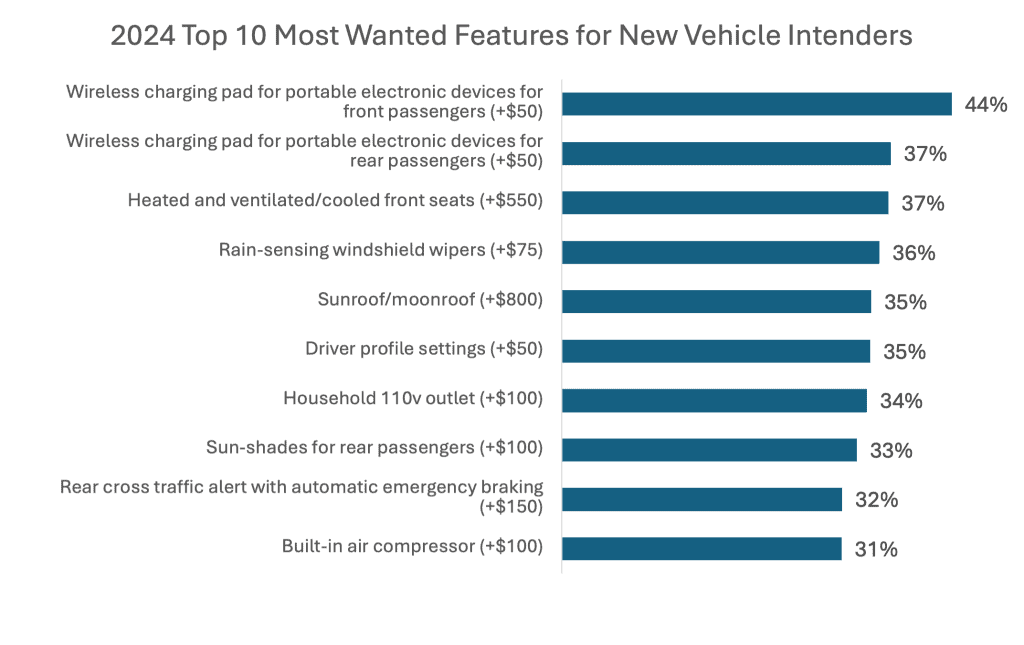
Wireless Charging is Convenient and Increasingly Ubiquitous
The most-wanted feature for 2024? Wireless charging pad for portable electronic devices for front passengers. As awareness rises for this popular amenity, demand isn’t just isolated to a vehicle’s front cabin, as the second most-wanted feature in this year’s FADS is a wireless charging pad for portable electronic devices for rear passengers as well. Note that in the 2023 study, both features ranked in the top 10 most-wanted list but moved higher up the ladder this year.
Driver Profile Settings are Becoming More of a “Must”
Today’s vehicles continue to offer numerous ways to fine-tune and tailor one’s experience behind the wheel. From dialing in particular seat comfort adjustments and customizing exterior LED light signatures, to suspension stiffness and preprogramming on-screen shortcuts within an infotainment system, personalization has become very important to today’s new vehicle shoppers. 35% of new vehicle intenders want driver profile settings, elevating it to the sixth most-wanted feature in this year’s study, up 10th rank in 2023 and 19th in 2022.
“This feature can be a huge help among households with multiple drivers who may at times share a vehicle,” says Robby DeGraff, AutoPacific Manager of Product and Consumer Insights. “Making your own driver profile settings requires a bit of initial homework, but once established, it’s essentially a get-in-and-go experience with the vehicle automatically setting the seat, mirrors, steering wheel, audio presets, and many other personal settings to your preferences when you get in the vehicle.”
Hands-Off Driving Systems Stay Off the Top 10, but Demand for Simple Safety-Related Automated Features Prevails
Despite a growing number of automakers offering hands-off semi-autonomous driving systems for use on highways, they’re not yet among the most demanded features by today’s vehicle shoppers. Rather, two simpler and more affordable safety-enhancing automated features have climbed their way into the top 10 most-wanted features list. Reintroduced for the 2024 study is rain-sensing windshield wipers, the most-wanted safety-related feature among new vehicle intenders with 36% of new vehicle shoppers wanting this feature in their next new vehicle. While this feature has been available to consumers for decades, it still isn’t a standard feature on most non-luxury models. The other safety-related feature in the top 10 in this year’s study is rear cross-traffic alert with automatic emergency braking, demanded by 32% of new vehicle intenders. “We’ve seen countless automakers demonstrate how this feature works via catchy television ads, but the benefits are critical to safeguarding those both inside and outside the vehicle, whether backing up in a busy parking lot or out of your driveway into the street,” DeGraff said. “We believe consumer demand for rear cross-traffic alert with automatic emergency braking will continue to be strong in the future.”
Earning a top 10 honorable mention is unresponsive driver stop assist. Ranking 3rd last year with interest from 43% of consumers, the feature was reworded this year to measure two types of assist separately: stop in lane and redirect to shoulder. Combined, the demand for unresponsive driver stop assist is 45% with a nearly equal split between consumers wanting stop in lane and those wanting redirect to shoulder.